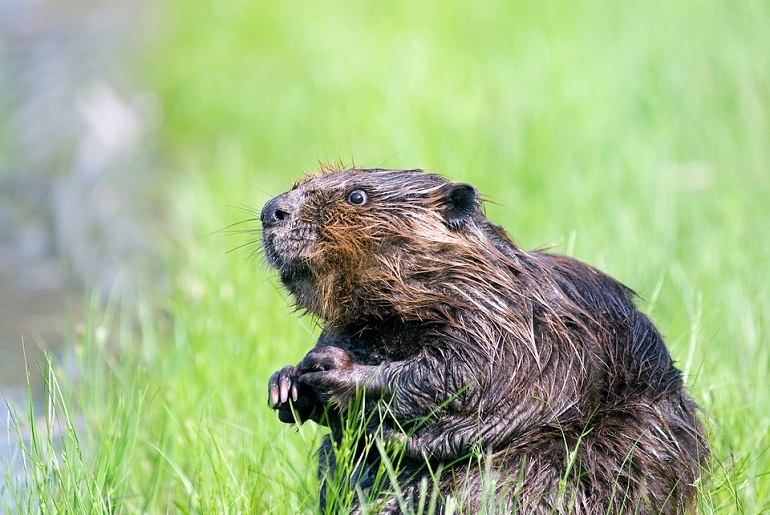Beavers shape our natural environment, building dams and creating wetland areas that provide homes and food for many other species. These large rodents live in close family groups and defend their territories aggressively if threatened.
With their flat tails, webbed hind feet, and teeth reinforced with iron, they are strange-looking animals that bear little resemblance to other rodents. So, where did they come from, and how did they evolve into the animals we know today?
Let’s take a look at life in a beaver lodge and find out how these animals feed, communicate, and contribute to their natural environment.
The Taxonomy of the Beaver
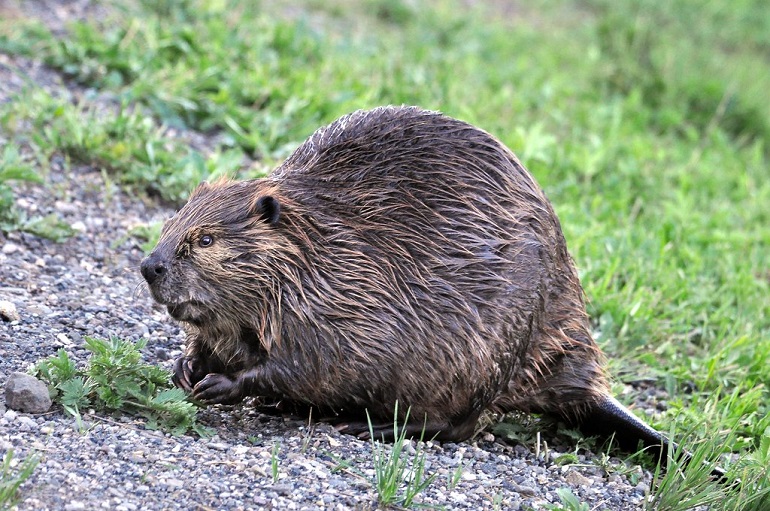
Beavers are among the largest rodents on Earth but are ecologically distinct from all other members of the Rodentia order.
Scientists remain somewhat mystified about the exact evolutionary processes that created the modern-day beaver, although they suspect semi-aquatic rodents existed long before either of the two existing beaver species appeared on Earth.
Evolution and Modern-day Beavers
Millions of years ago, a creature known as Microtheriomys articulaquaticus roamed through the wetlands of Montana, feeding on aquatic plants and sheltering in the burrows they dug for protection.
This is the earliest known species of semi-aquatic beaver and is probably related to the two species that exist today. It didn’t have the flat tail of modern beavers, nor did it have the reinforced teeth that enable today’s beavers to chew through tree trunks.
Scientists suspect that earlier versions of the beaver didn’t even swim, with evolutionary biologists like Dr. Jonathan Calede, suggesting that “the adaptations to burrowing were co-opted to transition to a semi-aquatic locomotion.”
In other words, the physiological adaptations that enable the early beaver to burrow also facilitated its transition to a semi-aquatic lifestyle.
Scientific Classification
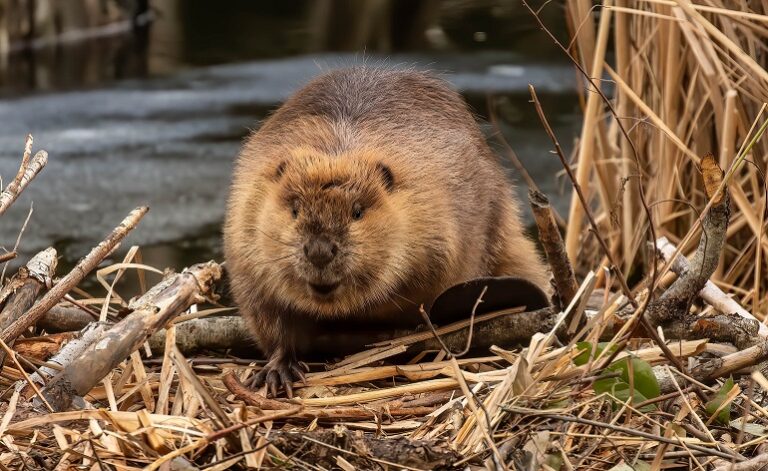
They may not look a lot like mice or even rats, but beavers are rodents, just like they are. It’s hardly surprising that they share so few physical characteristics as the Rodentia class is one of the largest and most diverse in the animal kingdom.
It includes everything from flying squirrels to naked mole rats! Beavers keep their distance to some extent, nestling into their own distinct family (Castoridae), and are the only species in the genus Castor.
How Many Different Types of Beavers are there?
There are only two species of beavers, the North American beaver, or Castor canadensis, and the Eurasian beaver, which goes by the scientific name Castor fiber. The two are closely related, although they never meet up for family gatherings as they live too far away from one another.
North American beavers are the largest rodents in the US but are usually slightly smaller than their European relatives. There are a few other minor differences that enable experts to differentiate the two, but to a novice like me, they look almost identical. For many years, even scientists battled to think of them as separate species!
Eurasian beavers have larger heads and longer muzzles than the North American variety and also have triangular nasal openings as opposed to the North American’s square ones.
Characteristics and Adaptations of the Beaver
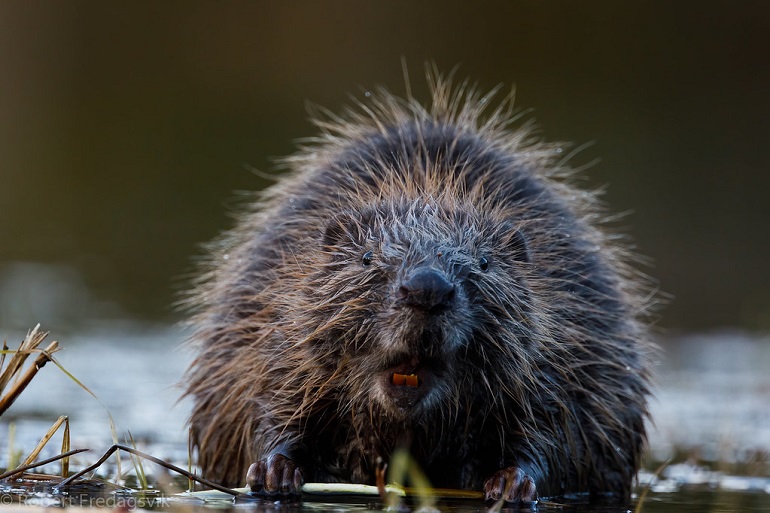
When beavers evolved into semi-aquatic mammals, they developed webbed rear feet to help them move through the water. Before that, their hind feet more closely resembled those of other rodents.
They also had standard rat-like tails until a few million years ago. These days, modern beavers have broad tails that act like rudders in the water. These tails have now evolved into handy places to store excess fat and also help the beaver regulate its body temperature by releasing excess heat.
Beavers wear thick fur coats throughout the year and keep these waterproof using the castor oil produced by small castor sacs or anal glands.
To cope with living a semi-aquatic existence, beavers’ eyes are protected by a nictitating membrane that enables them to see underwater. They also have valves in their noses and ears that they can close to prevent water from entering the cavities.
The Ecology of the Beaver and Its Environmental Impact
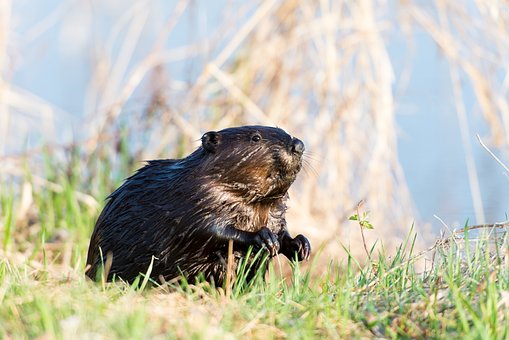
Beavers are extremely industrious and often referred to as nature’s engineers. Their dam-building activities can completely transform small streams into complex wetland areas, creating new habitats for other species and increasing plant diversity.
How Beaver Infrastructure Alters the Environment?
Beavers need access to woody materials to build dams and block flowing water to create ponds for themselves to live in. Their dams provide the structure they then use for building beaver lodges.
If they can’t access building materials, they burrow into the banks of rivers and streams to create bank lodges instead. They cover these with sticks to create safe shelters that offer protection against predators.
Beaver dams are built during the summer and fall and then maintained throughout the winter. Beavers select one lodge out of the several they build to act as a winter refuge, close to which they’ll store branches for their winter food supply.
What Environmental Effects Do Beavers Have?
Beavers aren’t known as nature’s engineers for nothing. Their industrious activities change landscapes dramatically and usually for the better.
When beavers build dams, they block the flow of water causing it to spread out and flood the surrounding countryside. This reduces the risk of flooding and gives a whole load of plants a generous watering!
The building materials they need to create their dams come from the area they’ve just flooded. As they chop down trees and gather branches, they clear sections of the forest, allowing the sunlight to penetrate and stimulate the plant life beneath.
Beavers have many positive effects on the environment, increasing diversity and safeguarding against droughts. However, they can also have a negative impact, with studies showing that the water below a beaver dam stagnates, killing many aquatic organisms.
Nevertheless, reintroduced beavers in Europe are busy restoring old wetland habitats, bringing damaged ecosystems back into balance.
Everything You Need to Know about Beaver Behavior
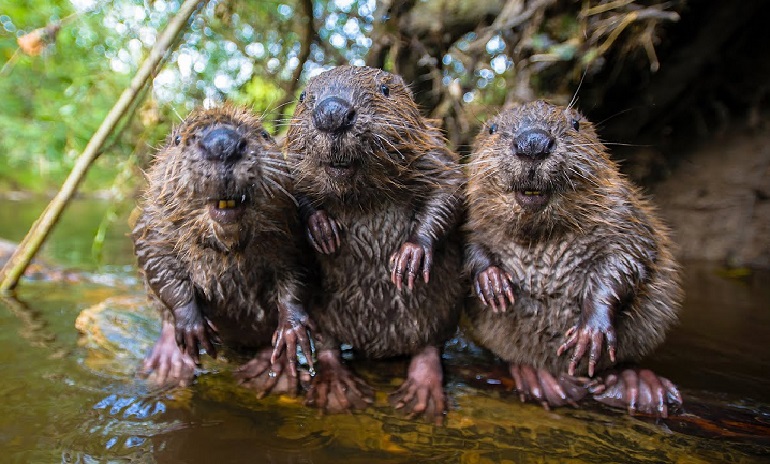
Beavers are sociable and hardworking creatures that inhabit large home ranges that they quickly adapt to suit their purposes. They are most active at night when they spend their time foraging or maintaining their dams and lodges.
The Beaver’s Family Life
Beavers are one of the few animals that mate for life and raise their young exclusively with one partner. They live in family groups known as colonies, which consist of the two parents and their young offspring.
Young beavers stay within the colony for a couple of years, helping out around the lodge, reinforcing the dam, and gathering food and building materials.
Once they leave the colony, these young beavers travel several miles searching for the ideal habitat to create a colony of their own.
Like most rodents, beavers have pretty poor eyesight and rely on their keen sense of smell to identify other family members.
Territory and Spacing in the Life of a Beaver
Some beaver dams block large rivers, stretching up to 1,600 feet from one bank to the other. The largest beaver dam in the world is so huge that it’s visible from space! But dams are just one small part of a beaver’s territory.
A beaver territory can range from less than one kilometer to over 20, depending on the food availability and the amount of beaver activity in the neighboring area.
Beavers defend their territories by building scent mounds out of the mud and marking them with their unique blend of castoreum.
Beavers also patrol their territories, looking for any signs of potential encroachment. They depend on these home ranges to provide food and building materials and will guard them aggressively if necessary.
Modes of Communication in the Beaver Colony
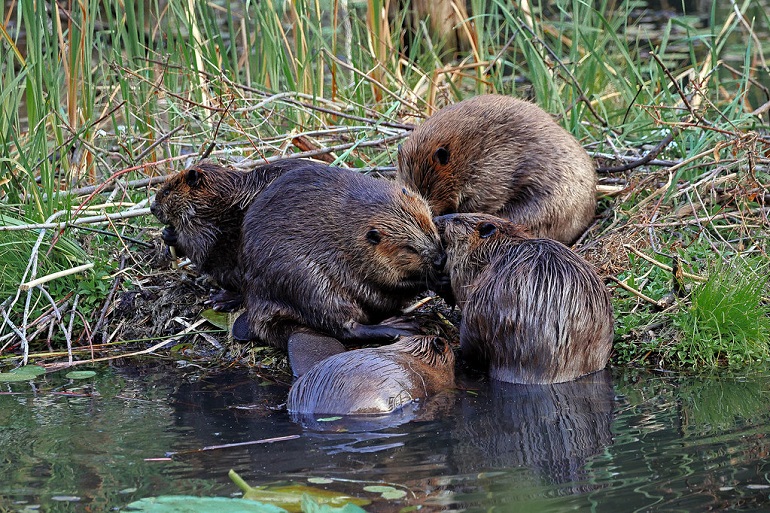
The noise most people associate with beavers is the sound of their scaly tails slapping the water’s surface. Beavers perform this tail slap to warn other beavers of potential danger, swimming away underwater as soon as the message has been delivered.
Within the family, beavers communicate using both body language and vocalizations, including grunts, growls, and squeaks.
When they want to communicate with other beavers outside the family, they turn to scent marking instead.
The Sleeping Habits of the Nocturnal Beaver
Most beavers wake up at around 5 pm to start foraging and working, although few remote beaver populations are active during the day.
Beavers are extremely industrious and usually busy themselves collecting food, maintaining dams, and refreshing the bedding in their lodges for 12 hours each day. Although they rarely spend the other 12 hours sleeping, it’s not unheard of!
People tend to think that beavers sleep in their dams, but they don’t. They sleep in lodges or burrows situated above the water level. These lodges can only be accessed by their underwater entrances, but the sleeping chamber itself above the water, remaining warm and dry regardless of the outside temperature.
Beavers and Their Interactions with Humans
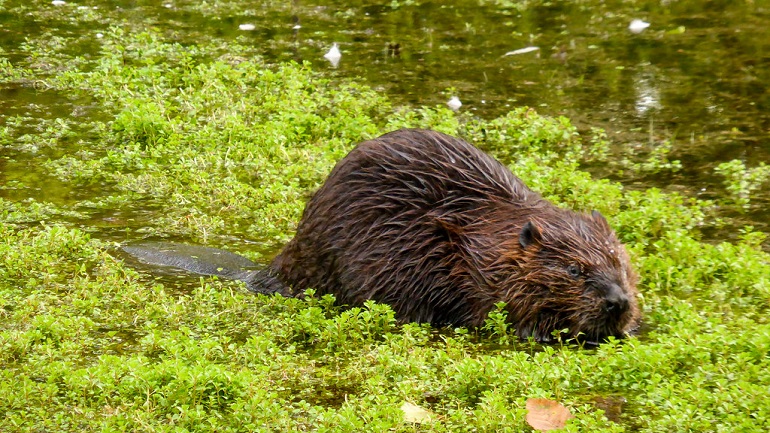
Beavers are often accused of causing damage by chewing down trees and flooding roads and residential areas with their dams. This brings them into conflict with humans, who then use live trapping to catch and relocate the beavers responsible.
Despite that, beavers are being reintroduced in many parts of Europe to restore some of the old wetlands that have vanished in their absence.
The Commercial Use of Beavers
Beavers have been used commercially for hundreds, if not thousands of years. Historically, they were hunted for their meat, fur, and castoreum, which has been used for numerous medical and cosmetic purposes.
The demand for beaver pelts drove the fur trade in North America, which hit its peak between 1860 and 1870. The pelts were used to make hats and were so valuable that they contributed to several conflicts, including the Beaver Wars of the 17th century.
In recent years, anti-fur campaigns and other conservation efforts have caused the demand for beaver pelts to decline, and the low prices seen in 2022 reflect this.
What Role Does the Beaver Play Culturally?
Beavers represent hard work and productivity and being as busy as a beaver should be considered a compliment.
The cultural significance of beavers stems from their role in Native American culture, where they were upheld as productive, skillful animals that create diverse habitats for other animals and plants.
To the Europeans, the amphibious nature of beavers made them almost supernatural, and they were often depicted as fantastical animals with fish-like tails and oversized tusks.
The beaver is the national animal of Canada, but not because of its reputation for hard work. The Canadians decided to celebrate the beaver because the trade of beaver pelts had such a positive impact on the national economy.
The Beaver’s Weird Eating Habits and Favorite Foods
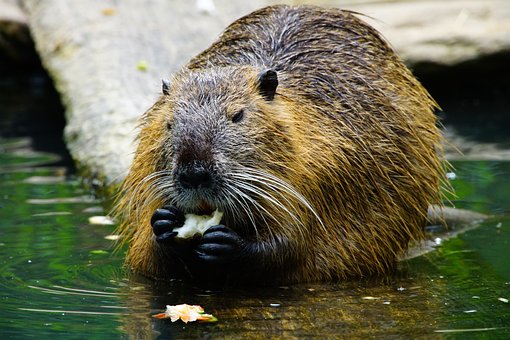
Beavers are most widely known for their unusual habit of eating wood. This comes in many different forms, but the beaver’s preferred foods include the bark of maple, aspen, and willow trees.
When eating, beavers hold the branch or twig in their front feet, using them like hands.
Beavers also eat small twigs, leaves, shrubs, and aquatic plants like water lilies and pondweed.
The beaver’s strong upper and lower incisors enable it to strip off the outer layer of bark and access the softer, more nutritious parts below.
It’s not only the beaver’s teeth that had to adapt to this diet but its digestive system as well.
Few mammals can digest wood and cellulose as effectively as a beaver, and that’s because their stomachs lack the essential microorganisms needed to break down these woody materials.
What Is the Global Distribution of Beavers?
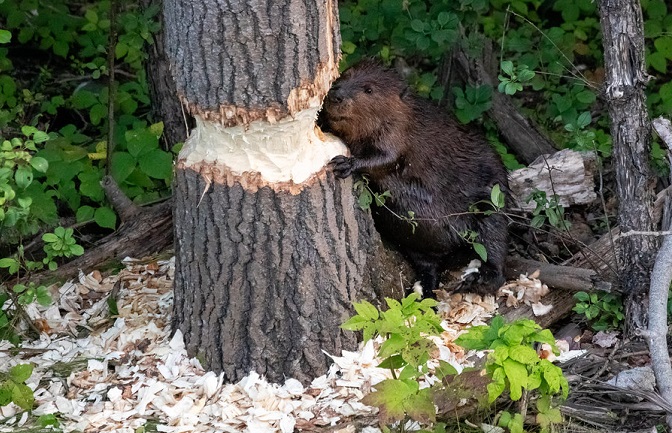
The beaver was once one of the most widely distributed mammals in North America, but hunting and trapping put a stop to that. Fortunately, conservation efforts have seen many populations recover, and the North American beaver is now present in much of its former range.
Beavers are relatively common throughout most of the United States, except in particularly arid areas like Arizona, Nevada, and Utah. Their geographic range stretches from the northern reaches of Canada to parts of northern Mexico.
The Eurasian beaver has yet to recover to the same extent as its North American cousin. It disappeared from many parts of Europe and Asia due to the pressures of trapping and became extinct in the UK in the 16th century.
Efforts to restore the European population are proving largely successful, and it now occurs in several locations in the UK, Spain, Central Europe, and Scandinavia. It’s also making a comeback in China and other parts of Asia.
The North American beaver was introduced to parts of Russia and Finland in the 1950s, and their range is still expanding.
What’s the Beaver’s Average Life Span?
North American beavers generally live longer than the Eurasian variety, surviving for between 10 to 15 years, compared to the Eurasian beaver, which has an average life span of just seven to eight years.
Beavers kept in captivity generally live longer, possibly due to the lack of predators and disease, and the oldest beaver in the world lived for 30 years in human care!
As beavers continue to grow throughout their lives, that 30-year-old beaver must have weighed well over 100 lbs!
Three Interesting Facts about Beavers
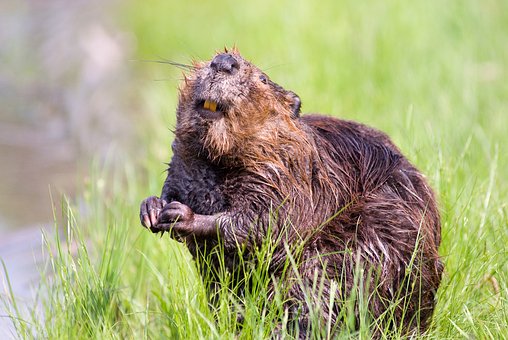
Beavers Have Orange Teeth
One of the most curious things about beavers is the color of their teeth. Most mammals have white teeth due to the calcium phosphate in the enamel, but beavers’ teeth are orange. That’s because beavers’ teeth are reinforced with iron, which makes them much stronger than human teeth.
Beavers Have a Unique Scent
Beavers excrete a chemical compound called castoreum, which smells like musky vanilla.
Beavers Don’t Eat Their Own Testicles
For a long time, people thought that beavers could chew off their own testicles to deter hunters from targeting them for their castoreum. Not only do beavers protect their genitals just as carefully as any other mammal, but the castoreum comes from scent glands situated close to the anus rather than the testicles themselves.
Adaptations the Beaver Made for an Aquatic Lifestyle
When beavers moved from land to water, they needed to adapt to their new habitat, and that meant being able to remain underwater for long periods.
The beaver’s thick fur coat is made up of two layers and insulates it against cold water. Beavers keep their coats waterproof by combing the oil from their castor glands through the hairs using a specialized grooming claw.
Beavers also developed webbed feet to make swimming more effective and can race through the water at speeds of up to 10km/h. They rely on their powerful tails for steering while using their front legs and mouths to grip their food and building material.
Reproduction and Development in the Life of a Beaver
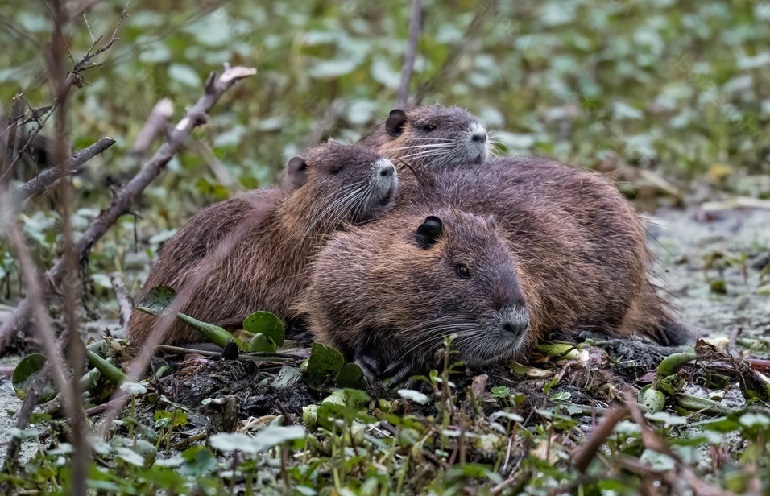
Once beavers reach sexual maturity and find a suitable mate, they reproduce once a year, usually in winter, so the kits will be born in spring, when there’s plenty of fresh food available.
Female beavers are pregnant for around three months, after which they give birth to a litter of one to four kits, each of which weighs just a few ounces.
Despite their size, beaver kits are precocial and can move around independently and see as well as their parents. Once they’re four days old, they’re ready to start swimming but can’t yet dive, so stay in their lodges until they reach three to four weeks of age.
Beaver kits survive on their mother’s milk for the first few days, but start eating solid food at around eight days old. They grow quickly during the first couple of months, gaining around 40 to 50 g of body weight each day.
These youngsters remain in the family colony until they’re two years old, by which point they’re sexually mature and ready to create their own colonies.
Do Beavers Have Any Natural Predators?
Although humans have done more to destroy the beaver and its habitat than any other animal species, it does have some natural predators.
After humans, gray wolves are the beaver’s primary predator, using ambush hunting tactics to take down unsuspecting and short-sighted beavers.
Coyotes and eagles will also opportunistically take down young beavers and kits, while American black bears use their powerful front paws to smash their way into a beaver lodge.
Mountain lions have also been known to prey on beavers, killing them with one swift bite to the neck.
The Conservation Status of Beavers in Europe and North America
Beavers were hunted almost to extinction in the 19th century and disappeared from many parts of the UK and Europe. They are now protected in many European countries, including Scotland and England, where new regulations were introduced in 2022.
According to the IUCN, neither the Eurasian nor North American beaver are endangered or vulnerable to extinction. The reintroduction and conservation of beavers in Europe have helped boost the beaver population, and there are thought to be over a million beavers now living in Europe.
The population of North American beavers is currently stable, although they are not protected under the Endangered Species Act. State legislation regulating the hunting and trapping of furbearers offers the species some protection, but in many states, it’s still legal to hunt and kill nuisance animals.
The Trapping and Removal of Beavers
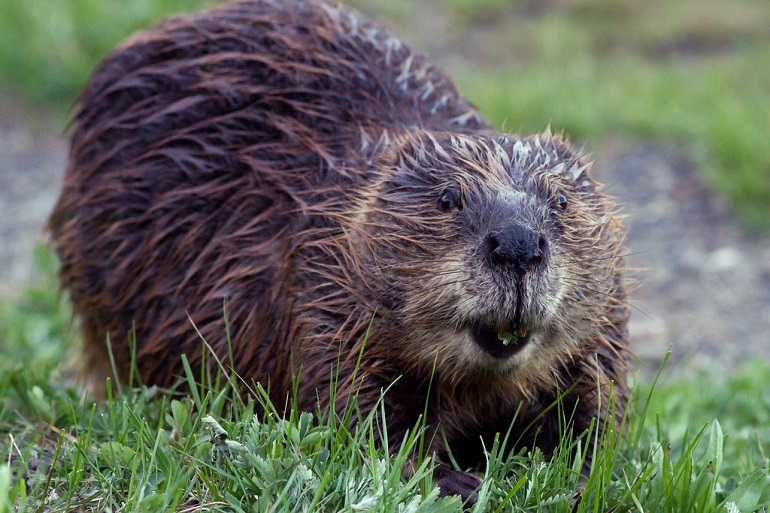
In some states, landowners can legally trap, relocate, or even kill beavers if they’re causing damage to property. In others, this practice is still illegal, while some require specific licenses and regulate the type of trap you’re allowed to use.
It’s also legal to trap beavers for their pelts, although this is usually restricted to a specific hunting season and often requires a license.
In Europe, trapping is heavily restricted, and only a certain number of trapping or hunting licenses are issued each year. Most European countries also have regulations governing the type of trap you can legally use.
FAQs About Beavers
How Big Do Beavers Grow?
Beavers continue to grow throughout their lives, although the rate of growth slows considerably once they reach adulthood. An adult North American beaver usually measures between three and four feet in length.
Eurasian beavers tend to be a bit smaller than their North American cousins, averaging between 2.5 and three feet long.
Why Are Beavers Important?
Beavers modify the landscape to create habitats for themselves and, in doing so, develop and maintain wetland areas that other wildlife then utilizes.
By blocking rivers, they also force the water to spread out over grasslands, which then filter out heavy metals and other dangerous pollutants.
This same action also helps to reduce flooding and lessen the effect of drought.
Beaver activity can also increase plant diversity by over 30%, thanks to them removing trees and flooding woodlands.
Do Beaver’s Teeth Grow Forever?
If beavers couldn’t gnaw on trees and other woody materials, their teeth would become so long they wouldn’t be able to walk.
Beavers’ teeth continue to grow throughout their lives at a rate of around four feet a year! Fortunately, they keep this dentistry under control by chewing on almost anything they can get their teeth into.
How Much Does a Beaver Weigh?
At birth, beaver kits weigh as little as 8 oz, but once they reach adulthood, they average between 40 and 70 pounds. Eurasian beavers are a little smaller and, therefore, lighter and usually weigh between 24 and 66 lb.
Are Beavers Carnivores?
Beavers have a strictly vegetarian diet that’s comprised of trees, leaves, twigs, and other plant matter. They’ll even eat the woody materials they use to build dams and lodges!
Do Beavers have Webbed Feet?
Beavers have webbed feet on their hind legs and digitated paws in front. While their hind feet act like flippers, propelling them through the water, their front paws are more like hands.
Are Beavers Rodents?
The Northern American and Eurasian beavers are two of the largest rodents in the world, competing for second place behind the capybara.
Conclusion
Beavers make significant contributions to the environment, changing the landscape to create greater biodiversity. They also help to alleviate flooding and improve water quality.
Despite these benefits, their relationship with humans has been full of conflict. First, we pursued them for their luxurious fur coats, and then we took over their home ranges, forcing them to find new places to build their dams.
Even now, many see beavers as a nuisance rather than an ecological necessity. Experts believe they are instrumental in our fight against climate change, helping to hold back essential water that would otherwise evaporate or run off.
Beavers are some of nature’s greatest engineers, and it’s time for us humans to find a way to finally work with them, rather than against them.


